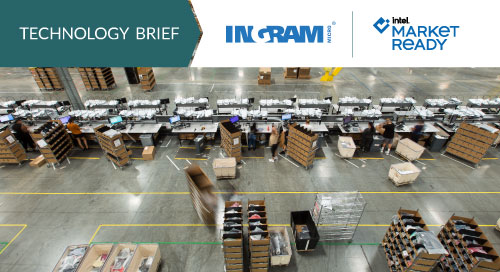Fill form to unlock content
Error - something went wrong!
Stay up-to-date with the latest IoT news.
Subscribed.
SIs Find New Prospects with Industrial Asset Tracking

There is a saying that you don’t know what you don’t know, and when it comes to factory automation in industrial operations, not knowing where your assets are can leave your company vulnerable. Fortunately, new technology advancements like AI and powerful edge computing can provide the informed decision-making you need.
Whether you manage a factory floor, warehouse, processing facility, or other industrial setting, visibility is what drives better planning and execution. In these environments, accuracy is paramount. Continuous awareness of the movements of production material, personnel, vehicles, and machinery provides the knowledge necessary to guide operations. This is where real-time asset tracking brings real value.
For example, location data can improve employee safety. Knowing when workers on the factory floor are too close to machinery allows mobile equipment to be shut down automatically. Or, when you determine that vehicles are on a collision course, you can implement braking or evasive measures.
And having precise coordinates on every asset allows operations managers to identify bottlenecks and improve functions across their facility. Tracking inventory can make procurement and ordering procedures more accurate.
The basis of these decisions must be verifiable information. “How do you know you need more forklifts or overhead cranes?” asks Prankit Gupta, Solutions Architect and Technical Product Manager at Ingram Micro, a global solutions integrator. “If you don’t have data to back it up, it’s just a gut feeling.”
Asset Tracking Powers Factory Automation
To tackle these challenges, Ingram partner Sewio developed an end-to-end Industrial Asset Tracking solution powered by ultra-wideband radio technology. Its real-time location system (RTLS) uses sensor tags placed on assets, vehicles, or people, which connect to anchors across the facility. The anchors do the heavy lifting—triangulating the location of the tags to a 30cm accuracy.
The system’s location engine software processes radio signals and translates them in X, Y, and Z coordinates, enabling RTLS analytics, which define business rules and metrics. Plus this information can be integrated with existing API or ERP systems for business insights.
In addition to the benefits of location tracking, Ingram offers end-to-end services that ensure both systems integrators (SIs) and end customers can not only implement these solutions but also derive the greatest benefits from them.
“This technology has come a long way in the last five to ten years, and it can be challenging to enter this space and know the right tech or vendor to choose,” says Bhavesh Patel, Senior Exec of IoT, AI and Hyperautomation Solutions at Ingram Micro. “We engage directly with industry stakeholders and decision-makers to help our partners cut through the noise in disruptive tech—by providing everything from demos and solutions to managed services.”
This kind of consultation and support, along with personalized solution design, are making it more viable than ever for industrial SIs to enter the indoor location services market and gain that all-important visibility into their processes.
At the heart of Sewio technology and Ingram Services is an enhanced work environment. “From real-time production visibility to automated safety systems, these solutions are all about improving the industrial workplace,” says Gupta.
Proof-in-point is a project where Ingram Micro, Sewio, and their SI partner developed a unique solution for a waste management facility. In an environment where tagging assets was neither necessary nor desirable, the team used indirect tracking technology for managing workflows in both indoor and outdoor environments. This solution traced materials’ conditions with a fully integrated system, resulting in more efficient monitoring and lower costs.
“Every #SystemsIntegrator is at a different stage of their #DigitalTransformation journey due to the rapidly evolving nature of industrial markets.” – Prankit Gupta, @IngramMicroInc via @insightdottech
Powerful Edge Computing
Tracking resources with high accuracy requires powerful computing power at the network edge. “The Intel® processor-powered edge server is at the heart of these solutions, potentially looking into millions of data points,” Gupta explains. “Customers need something that is efficient, reliable, and above all, scalable for their operations.
This reinforces the value of working with aggregators like Ingram Micro that have deep knowledge on the best technology and tools as well as the scale to deliver both off-the-shelf and customized solutions.
“Every systems integrator is at a different stage of their digital transformation journey due to the rapidly evolving nature of industrial markets,” says Patel. “With the right support they can build their own IoT systems and increase their capabilities with reliable, scalable, and validated solutions.”
At the same time, solution providers like Sewio can expand their market share by collaborating with Ingram Micro. They can access different industries, leverage support, and reach new customers.
Even more, Sewio technology can extend beyond industrial tracking use cases, bringing even more opportunities for the company and their customers. For example, monitoring asset energy use can help manufacturers move to more efficient and carbon-neutral operations. Companies can do well for their bottom line and do good for the environment as well.
For more insights on industrial automation, listen to our podcast: Digital Transformation for SIs: Think Big, Start Small.
Edited by Georganne Benesch, Associate Editorial Director for insight.tech.